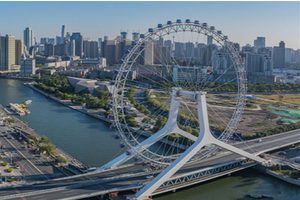Xisha open tourism
Xisha Islands, one of the four major islands in China's South China Sea, is composed of Yongle Islands and Xuande Islands. It is the largest archipelago in China's South China Sea, with more islands and reefs than Nansha Islands. China has sovereignty and jurisdiction over the Xisha Islands, and has long-term actual control and management in the relevant sea areas.
The reasons why the Xisha Islands are not open include but are not limited to the following:
1. Geographical location: Xisha Islands is located in the South China Sea of China and is a part of China. The government of China has sovereignty and jurisdiction over the Xisha Islands, and has taken a series of measures to protect and manage the relevant sea areas.
2. Climatic conditions: The climatic conditions of Xisha Islands are relatively harsh, with high temperature, high humidity and high salt all the year round, strong wind, high waves and deep water, which are not suitable for human habitation.
3. Environmental protection: The natural environment of Xisha Islands is relatively fragile and vulnerable to human activities and natural disasters. In order to protect the environment of the Xisha Islands, the China government has taken a series of measures, including prohibiting large-scale engineering construction in the relevant sea areas and prohibiting vegetation destruction activities on the island.
4. Social stability: The social stability of Xisha Islands is relatively low, and there are some security risks and unstable factors. In order to maintain social stability, the government of China needs to strengthen public security and safety management in relevant areas.
In a word, there are many reasons why the Xisha Islands are not open, including but not limited to geographical location, climatic conditions, environmental protection and social stability.
1. Xisha Islands: It is open to tourists, so you can travel there. As a part of China, Xisha Islands provide limited tourism services, and visitors can visit its unique natural scenery and marine ecosystem.
2. dongsha islands: At present, it is under the jurisdiction of Taiwan Province, China. Although the tourist facilities are limited, it is theoretically possible to go there. Due to geographical location and political factors, traveling may require special permission and arrangements.
3. Nansha Islands: Some islands and reefs are occupied by Vietnam, so it is risky to travel there. The ownership of some islands and reefs in Nansha Islands is controversial. Therefore, China citizens traveling to these areas may face security and legal uncertainty.
4. zhongsha islands: Most areas are within the claimed sovereignty of the Philippines, so it is difficult to travel there. Most parts of zhongsha islands are under Philippine control, and China citizens may be restricted from traveling to these areas.
Please note that due to the regional political situation and security considerations, the specific situation may change, and you should consult the latest official information and abide by relevant laws and regulations before traveling.
Prev: Tourism introduction English ppt
Next: Susai tourism






